Chrysler used the '300' name for a line of high-performance personal luxury cars beginning in 1955 through 1965. These were known as the 'letter series' as they had a letter designation as well. The initial year was known as the C-300 representing its 300 horsepower 331 cubic-inch FirePower V8 engine. This, remarkably, was the first production automobile to reach the 300-horsepower status since the legendary Dusenberg Model SJ of the 1930s. The 1956 cars were designated 300B, with successive models receiving the next letter of the alphabet as a suffix, albeit skipping 'i.' The final 300 'letter series' was the 1965 300L. 
Convertible
View info and historyThe Chrysler 300 'letter Series' was advertised as 'America's Most Powerful Car.' Confusingly, Chrysler added another 300 model to its lineup beginning in 1962, described as the 'non-letter series.' Devoid of a letter in its name, these 'non-letter' versions were positioned as a more affordable version of its exclusive 300 'letter series' sibling. When the 'letter series' was discontinued in 1966, the 300 'non-letter' soldiered on through 1971. The name was temporarily retired, revived in 1979 as an option package on the Cordoba coupe.When introduced in 1962, the Chrysler 300 replaced the Saratoga and helped fill the gap left by the cancellation of the Desoto marque in 1961. Initially known as the 'Sport Series', the 300 was offered as a hardtop coupe, convertible, and sedan. Comparatively, the letter series was offered solely as a coupe with bucket seats for all passengers. The 300 'non-letter series' was offered with either a 383 or 413 CID V8 engine paired with a three-speed manual or automatic transmission. The wheelbase measured 122 inches, the length of 215.3 inches, and stood 55 inches tall. 
Convertible
View info and historyStyling updates arrived in 1965, and when the 300 'letter series' was discontinued in 1966, the 'non-letter' series now had access to the 440 cubic-inch V8 engine (which replaced the 413 V8). The wheelbase now measured 124 inches, a length of 218.2 inches, and a height of 54.9 inches.Styling updates were applied to the 1967 models, and the body style lineup dropped the sedan, leaving the four-door hardtop, two-door hardtop, and two-door convertible. The 1968 model year introduced concealed headlamps to the 300, continuing through 1971. The 1969 Chrysler Models with Fuselage Styling
Chrysler introduced 'Fuselage Styling' to its Newport, Newport Custom, 300, New Yorker, and Town & Country Series in 1969. This new styling theme would become symbolic of Chrysler's full-size cars until the end of the 1973 model year. Distinctive styling elements included a pronounced side curvature from the rocker panels all the way to the roof rails, and a higher beltline that resulted in the appearance of an airplane fuselage. Housed within the large bumper section was a wide grille comprised of numerous fine horizontal blades, with the grille coming to a V-shaped point at the center. Flanking the grille on either side were dual round headlights.
Convertible
View info and historyThe 1969 Chrysler passenger cars continued to rest on a 124-inch wheelbase platform while the station wagons measured 122 inches (length of 224.7 inches for passenger cars and 224.8 for station wagons). The Newport was powered by a standard two-barrel 383 CID V8 with prices that ranged from $4,250 for the sedan to $4,660 for the convertible. The Newport Custom Model added a higher level of trim, standard equipment, and interior comfort. Offered with the same body styles as the Newport (except the convertible), prices ranged from $4,420 for the sedan and rose to $4,570 for the hardtop sedan.With the price hierarchy, the 300 was above the Newport and Newport Custom, but below the New Yorker and Town & Country. The New Yorker was based on the 300 specifications, plus added numerous additional amenities including power steering, power front disc brakes, an electric clock, simulated walnut-grained interior appliques, and pleated cloth and vinyl bench seats. Prices ranged from $5,100 for the sedan to $5,22 for the hardtop sedan. The styling of the New Yorker was distinguished by its unique grille which received a different insert pattern and horizontal division bars. The headlights were spaced farther apart than on Newports, and additional decorative treatments adorned the exterior. The Town & Country were 6- and 9-passenger station wagons that wore the new fuselage styling and the New Yorker-type grilles. Powered by the 383 CID V8 engine paired with a TorqueFlite transmission, the list of standard amenities included a cleaner air system, exhaust emissions control system, power front disc brakes, and power steering. The six-passenger wagon was priced at $5,200 while the 9-passenger version was just below $5,300.The 1969 Chrysler 300
Convertible
View info and historyStyling
The Chrysler 300 had the same family resemblance to its lower-priced Newport sibling, distinguished by 'Three-Hundred' spelled out in chrome block letters on the rear quarter panels. The heavily chromed bumper and grille surround had a blacked-out insert with a chrome cross-bar combination with its center carrying a circular medallion. The concealed headlights, another distinguishable feature, gave the front a clean and 'calming' appearance. Parking lamps were located at each corner.The sides were sculpted, slightly curvaceous, with high beltlines and minimal distracting elements front to rear, albeit except for the door handles. A thin bar of chrome trim surrounded the wheel wheels and lower middle section. On the outer edge of the hood was a chrome bar that began just behind the front leading edge of the hood and continued to the rear windows, accenting the chrome strip that traversed around the windshield. In the back, the blacked-out theme continued in the rear deck, with 300 lettering at its center. The taillamps were long and horizontal.
Convertible
View info and historySpecification
The Chrysler 300 came standard with the 440 cubic-inch V8 engine which it shared with the New Yorker. It had overhead valves, a cast iron block, five main bearings, hydraulic valve lifters, 10.1:1 compression, and a Holley four-barrel carburetor. The engine produced 350 horsepower at 4,400 RPM, which was sent to the rear wheels with the help of a 727 TorqueFlite three-speed automatic transmission. The optional 'TNT' version of the 440 CID V8, priced at approximately $200, adding a four-barrel carburetor to boost output to 375 bhp. The Chrysler 300 came with a heavy-duty battery, power steering, and power brakes.Body Style, Price, and Production
The 1969 Chrysler 300 was offered as a two-door hardtop coupe priced at $4,715, a four-door hardtop sedan at $4,800, and a two-door convertible with seating for five at $5,060. This would be one of the last years the 300 was offered with the open-top body style (no convertible on the 300 was offered in 1971).
Convertible
View info and historyThe hardtop coupe was the most popular 1969 300 body style with 16,075 examples built, followed by 14,464 of the hardtop sedan, and 1,933 of the convertible. The following year (1970), Chrysler would built 9,589 examples of the hardtop coupe, 9,846 of the hardtop sedan, and 1,077 of the convertible (on the 300 line). Additional 485 were 2-door, 5-passenger 'Hurst' - a high-performance version of the Chrysler 300 built by the Hurst Performance Corp. The 32,472 examples of the Chrysler 300 built in 1969 represented approximately 12.5% of Chrysler's total automobile production for that year. This was higher than the 20,997 examples built in 1970 but slightly less than the 34,621 built in 1968. Standard Amenities
The 1969 Chrysler 300 came standard with a heavy-duty battery, power-operated concealed headlamps, triple body accent stripes, and turn signal indicator lights. The interior received an AM-FM radio, foam seat cushions, bench seats with fold-down center armrests (hardtop body styles), and vinyl bucket seats with center cushion armrests in the convertibles.
Convertible
View info and historyThe big news for the Chrysler 300 in 1970 was the Hurst 300 edition which wore a Spinnaker White exterior trimmed in Satin Tan with a leather interior and was further distinguished by its fiberglass power bulge hood with functional air scoop. It had special striping, an integrated wing-type rear spoiler, and fiberglass deck and rear end caps. All Chrysler productions were devoid of a convertible body style in 1971, the final year of production for the 300 until its return in 1979 as an optional package on the Cordoba Coupe.
by Daniel Vaughan | Mar 2023
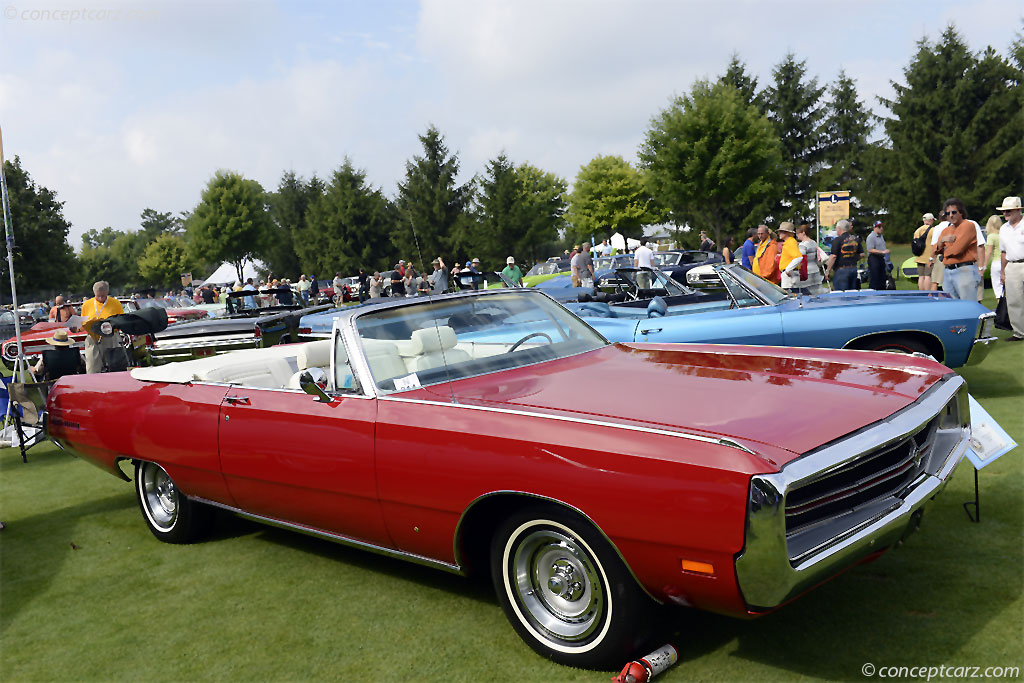
Convertible
View info and history
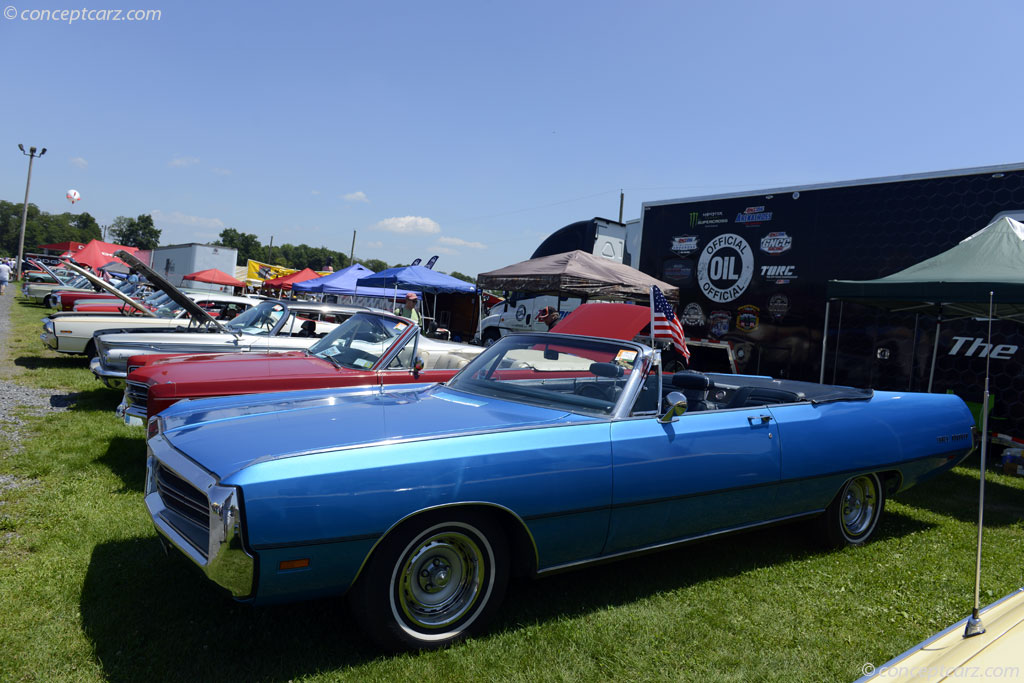
Convertible
View info and history
Chrysler introduced 'Fuselage Styling' to its Newport, Newport Custom, 300, New Yorker, and Town & Country Series in 1969. This new styling theme would become symbolic of Chrysler's full-size cars until the end of the 1973 model year. Distinctive styling elements included a pronounced side curvature from the rocker panels all the way to the roof rails, and a higher beltline that resulted in the appearance of an airplane fuselage. Housed within the large bumper section was a wide grille comprised of numerous fine horizontal blades, with the grille coming to a V-shaped point at the center. Flanking the grille on either side were dual round headlights.
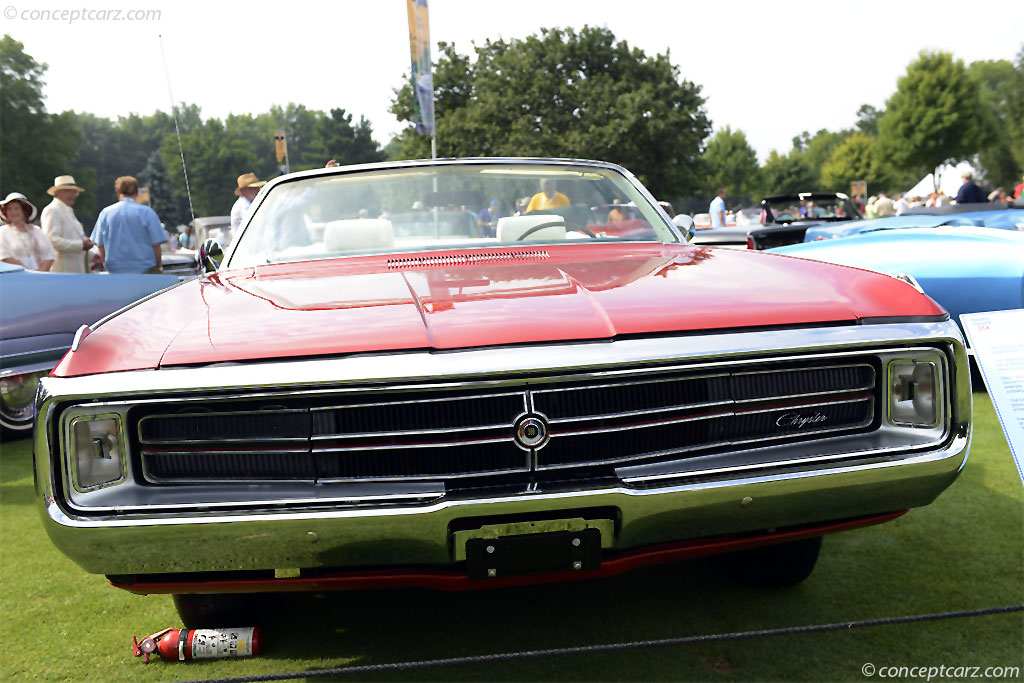
Convertible
View info and history
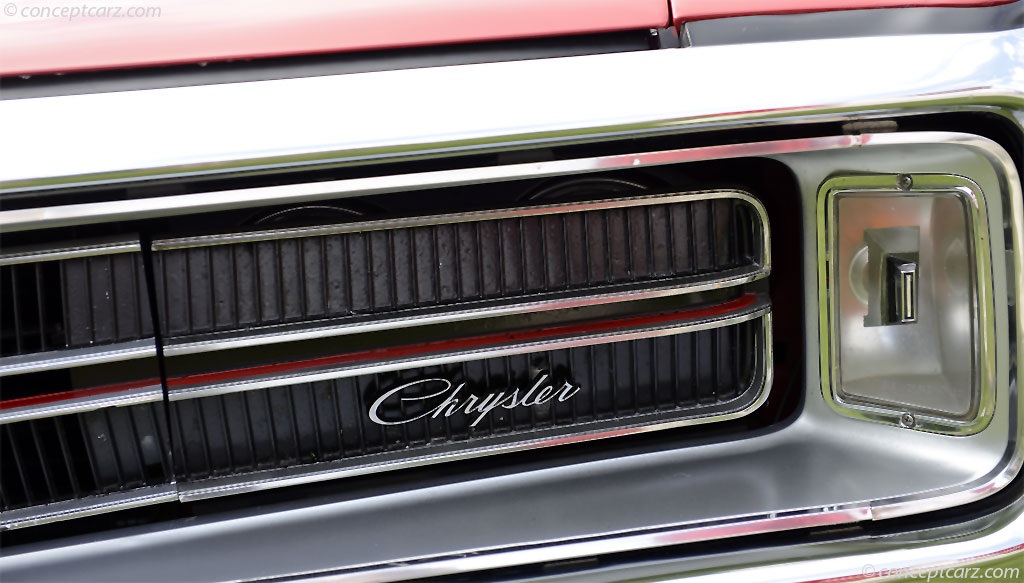
Convertible
View info and history
The Chrysler 300 had the same family resemblance to its lower-priced Newport sibling, distinguished by 'Three-Hundred' spelled out in chrome block letters on the rear quarter panels. The heavily chromed bumper and grille surround had a blacked-out insert with a chrome cross-bar combination with its center carrying a circular medallion. The concealed headlights, another distinguishable feature, gave the front a clean and 'calming' appearance. Parking lamps were located at each corner.The sides were sculpted, slightly curvaceous, with high beltlines and minimal distracting elements front to rear, albeit except for the door handles. A thin bar of chrome trim surrounded the wheel wheels and lower middle section. On the outer edge of the hood was a chrome bar that began just behind the front leading edge of the hood and continued to the rear windows, accenting the chrome strip that traversed around the windshield. In the back, the blacked-out theme continued in the rear deck, with 300 lettering at its center. The taillamps were long and horizontal.
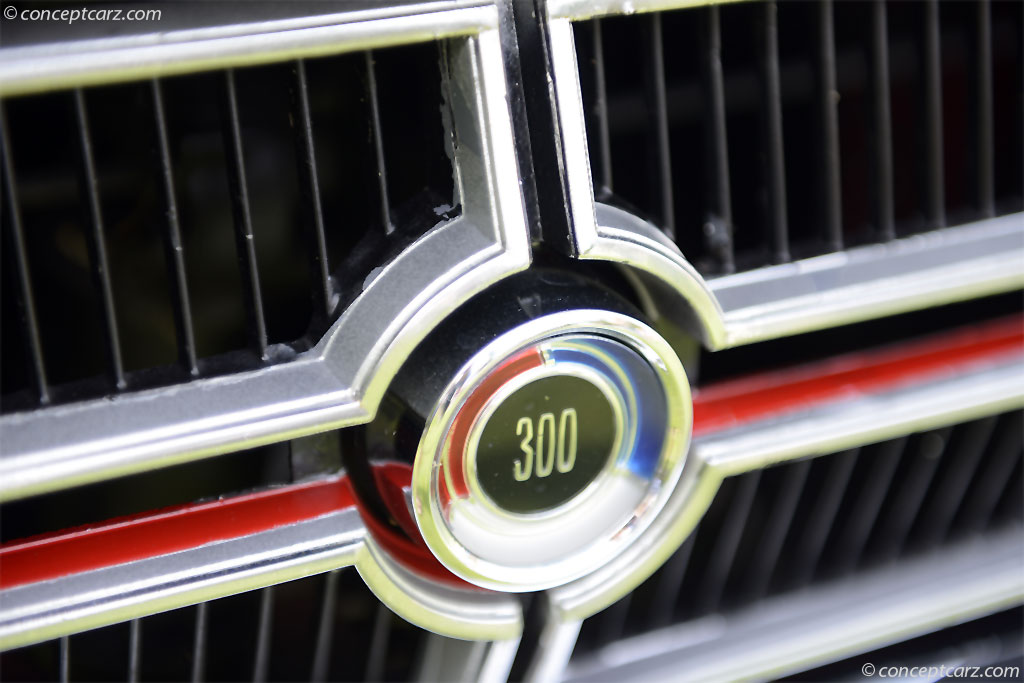
Convertible
View info and history
The Chrysler 300 came standard with the 440 cubic-inch V8 engine which it shared with the New Yorker. It had overhead valves, a cast iron block, five main bearings, hydraulic valve lifters, 10.1:1 compression, and a Holley four-barrel carburetor. The engine produced 350 horsepower at 4,400 RPM, which was sent to the rear wheels with the help of a 727 TorqueFlite three-speed automatic transmission. The optional 'TNT' version of the 440 CID V8, priced at approximately $200, adding a four-barrel carburetor to boost output to 375 bhp. The Chrysler 300 came with a heavy-duty battery, power steering, and power brakes.Body Style, Price, and Production
The 1969 Chrysler 300 was offered as a two-door hardtop coupe priced at $4,715, a four-door hardtop sedan at $4,800, and a two-door convertible with seating for five at $5,060. This would be one of the last years the 300 was offered with the open-top body style (no convertible on the 300 was offered in 1971).
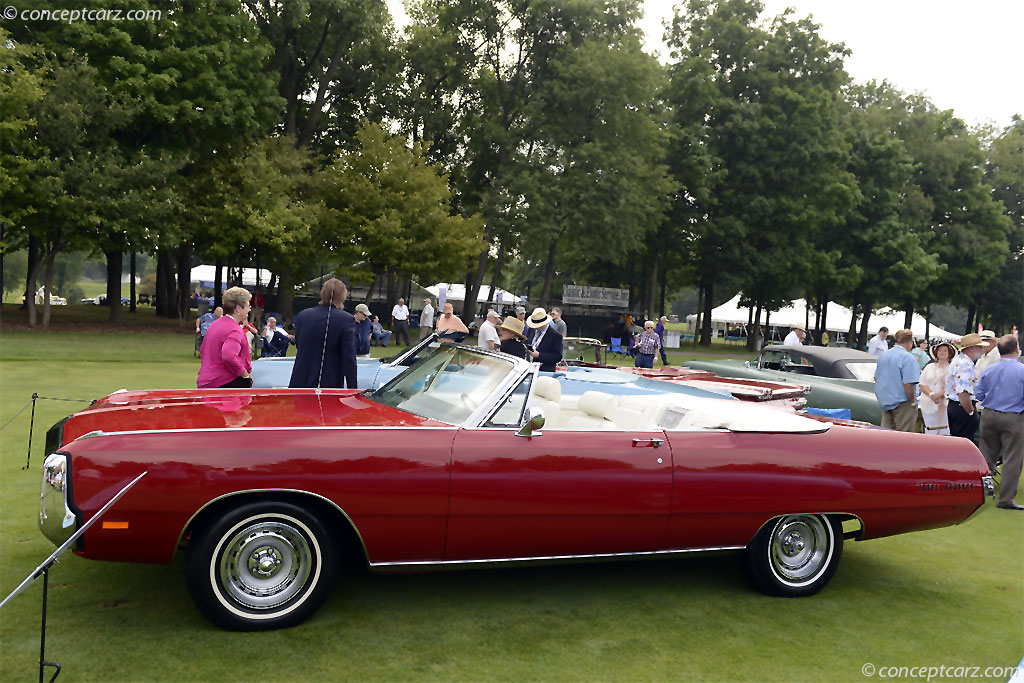
Convertible
View info and history
The 1969 Chrysler 300 came standard with a heavy-duty battery, power-operated concealed headlamps, triple body accent stripes, and turn signal indicator lights. The interior received an AM-FM radio, foam seat cushions, bench seats with fold-down center armrests (hardtop body styles), and vinyl bucket seats with center cushion armrests in the convertibles.
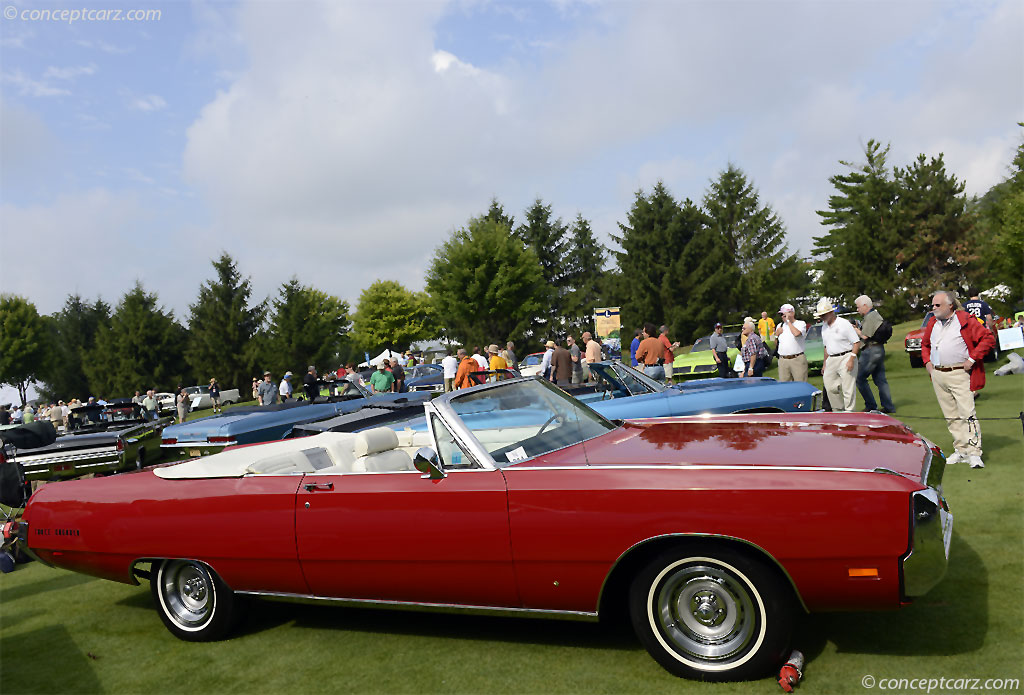
Convertible
View info and history
by Daniel Vaughan | Mar 2023
Related Reading : Chrysler 300 Non-Letter History
The Non-Letter Chrysler 300 Series was produced by Chrysler from 1962 through 1971. The Chrysler 300 Sport Series was positioned below the letter series and served as a replacement for the Windsor. The exterior appearance was identical to the Letter Car, except for minor differences including the tires, hubcaps, and an absence of H on the rear deck. The 300 Sport Series also added a 4-door hardtop....
Continue Reading >>
Continue Reading >>
Similarly Sized Vehicles
from 1969
Similarly Priced Vehicles
Chrysler Monthly Sales Volume
March 2023
31,899
1969 Chrysler 300 Series Vehicle Profiles
Recent Vehicle Additions
Performance and Specification Comparison
Price Comparison
300 Non-Letter Specification Comparison by Year
Year
Production
Wheelbase
Engine
Prices
20,997
124.00 in.
8 cyl., 383.00 CID., 350.00hp
8 cyl., 440.00 CID., 350.00hp
8 cyl., 440.00 CID., 375.00hp
8 cyl., 440.00 CID., 350.00hp
8 cyl., 440.00 CID., 375.00hp
$4,823 - $5,840


















